Welche Batterien werden in BESS verwendet??
Wenn Sie die Welt der Batterie-Energiespeichersysteme erkunden (BESS), Mir kommt eine grundsätzliche Frage in den Sinn: was eigentlich drin ist? Was ist die Kernbatterietechnologie, die Energie aus Ihren Solarmodulen oder dem Netz so effektiv speichert?, bereit, Ihr Zuhause oder Ihr Unternehmen mit Strom zu versorgen, wenn Sie es am meisten brauchen?
Die überwiegende Mehrheit der modernen BESS ist heute installiert, von Wohnprojekten bis hin zu Großprojekten im Versorgungsmaßstab, verwenden Lithium-Ionen-Batterien. Speziell, Die bevorzugte und vorherrschende Chemie für die stationäre Energiespeicherung ist LFP (Lithiumeisenphosphat oder LiFePO₄). Diese Technologie wurde aufgrund ihrer überlegenen Kombination ausgewählt Sicherheit, sehr lange Lebensdauer, und hervorragende Stabilität, Damit ist es der Goldstandard für Zuverlässigkeit, langfristige Leistung.
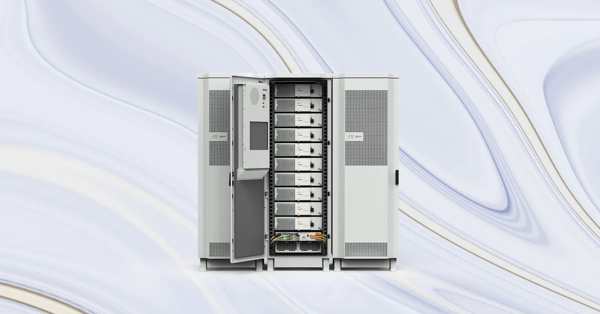
Bei GYCX Solar, Unser Engagement für Sicherheit und langfristigen Wert für unsere Kunden ist der Grund, warum wir exklusiv unsere Produkte entwerfen Bess-Batterien Lösungen rund um die LFP-Technologie. Es ist das Bewährte, berufliche Wahl. Lassen Sie uns mehr über diese leistungsstarken Systeme erfahren.
Was ist die Lebensdauer einer Bess -Batterie??
Ein BESS ist ein bedeutender, langfristige Investition in die Energieinfrastruktur Ihrer Immobilie. Also, Eine kritische Frage ist: Wie lange hält die Batteriekomponente?, das Herzstück des Systems, eigentlich zuletzt?
Das LFP (Lithium -Eisenphosphat) Der Akku eines modernen BESS ist auf Ausdauer ausgelegt, mit einer erwarteten Betriebslebensdauer von 10 Zu 20 Jahre. In Bezug auf die Nutzung, Diese Batterien werden beeindruckend bewertet 3,000 über 6,000 Vollladungszyklen. Den Kunden Vertrauen in diese Langlebigkeit zu geben, Seriöse Hersteller gewähren auf ihre BESS-Produkte in der Regel eine umfassende 10-Jahres-Garantie.
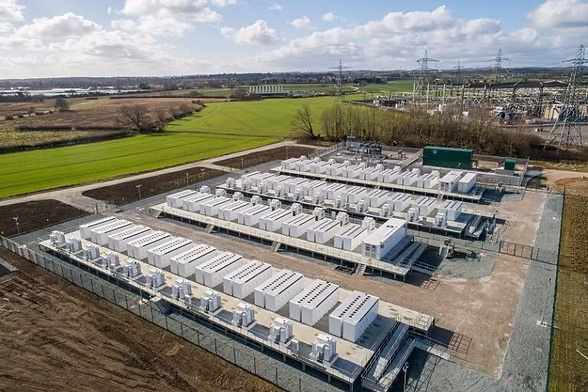
Tauchen tiefer: Das Zeug zu einer langlebigen Batterie
Die beeindruckende Lebensdauer einer modernen BESS-Batterie kommt nicht von ungefähr; Es ist das Ergebnis einer überlegenen Chemie und eines intelligenten Systemdesigns:
- LFP -Chemie: LFP ist von Natur aus stabiler und robuster als andere Lithium-Ionen-Chemikalien. Es hält den Belastungen des täglichen Radfahrens stand (Tagsüber Solarladung, Entladung nachts) über viele Jahre hinweg ohne nennenswerte Verschlechterung. Eine Batterie für 6,000 Zyklen könnten theoretisch länger dauern 16 Jahre mit einem Zyklus pro Tag.
- Intelligentes BMS: Das integrierte Batteriemanagementsystem (BMS) fungiert als Wächter, Schützt die Batteriezellen ständig vor Stress, indem es ein Überladen verhindert, Überdünnung, und sicherzustellen, dass alle Zellen im Gleichgewicht sind.
- Thermalmanagement: Das BESS ist ein technisches System mit integriertem Wärmemanagement. Dies ist im heißen und feuchten Klima Singapurs von entscheidender Bedeutung. Indem die Batteriezellen in ihrem optimalen Temperaturbereich gehalten werden, Das System verhindert die beschleunigte Alterung, die durch Hitze verursacht werden kann, direkt zu einem längeren Leben beitragen.
- Die Garantie: Eine 10-Jahres-Garantie ist der Industriestandard für hochwertige BESS-Wohngeräte. Es garantiert in der Regel, dass der Akku einen bestimmten Teil seiner ursprünglichen Kapazität behält (Z.B., 70%) bis zum Ende der Laufzeit, einen klaren Maßstab für die langfristige Leistung liefern.
Was sind die drei Haupttypen von BESS??
Ist ein BESS für ein einzelnes Haus dasselbe wie ein BESS, mit dem das Stromnetz einer ganzen Stadt versorgt wird?? Gar nicht. Die BESS-Technologie ist unglaublich skalierbar, Sie werden je nach Anwendung und Größe typischerweise in drei Haupttypen eingeteilt.
Die drei Haupttypen von BESS sind:
- Wohn-BESS: Kleine Systeme für einzelne Häuser.
- Werbung & Industriell (C&ICH) BESS: Mittelständische Systeme für Unternehmen, Fabriken, und andere Gewerbeimmobilien.
- BESS im Versorgungsmaßstab: Massiv, Systeme auf Netzebene, die sich im Besitz von Energieversorgungsunternehmen befinden und von diesen betrieben werden.
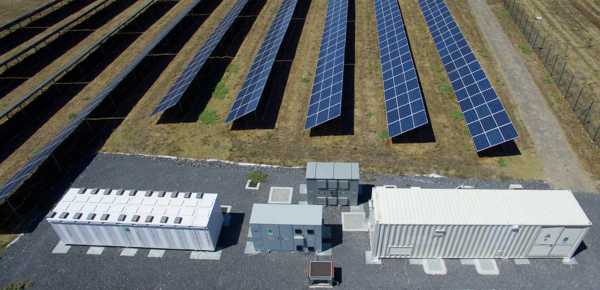
Tauchen tiefer: Von Ihrem Zuhause bis zum Stromnetz
Schauen wir uns den Zweck jedes Typs an:
- Wohn-BESS:
- Größe: Typischerweise 5 kWh zu 30 kWh.
- Zweck: Die Hauptziele sind die Maximierung des solaren Eigenverbrauchs (Speicherung von Sonnenenergie am Tag zur Nutzung in der Nacht, Dies eignet sich hervorragend zur Bewältigung der hohen Stromtarife in Singapur), Bereitstellung von Notstrom bei Netzausfällen, und die Energieunabhängigkeit erhöhen.
- Formfaktor: Normalerweise ein elegantes Wandgerät oder ein Kompaktgerät, stapelbares Regalsystem.
- Werbung & Industriell (C&ICH) BESS:
- Größe: Aus 30 kWh bis mehrere Megawattstunden (MWh).
- Zweck: Wird hauptsächlich zum „Peak Shaving“ verwendet" um teure Nachfragegebühren zu senken, Maximierung der Solarnutzung vor Ort, und Bereitstellung von Notstrom für kritische Vorgänge.
- Formfaktor: Häufig größere Innenschränke oder für den Außenbereich geeignete Gehäuse.
- BESS im Versorgungsmaßstab:
- Größe: Sehr groß, von Dutzenden bis zu Tausenden von MWh.
- Zweck: Zur Stabilisierung des gesamten Stromnetzes. Sie speichern riesige Mengen an Energie aus großen Solar- oder Windparks, Bereitstellung von Netzdienstleistungen wie Frequenzregulierung, und den umweltschädlichen „Peak“ ersetzen" Kraftwerke.
- Formfaktor: Besteht normalerweise aus großen Reihen, Versandcontainergroße Einheiten.
Bei Gycx Solar, Wir sind auf die Planung und Installation leistungsstarker Wohn- und C-Anlagen spezialisiert&Ich BESS-Lösungen, die auf die individuellen Energiebedürfnisse unserer Kunden in Singapur zugeschnitten sind.
Ist BESS AC oder DC?
Wenn Sie sich mit den technischen Details von BESS befassen, Sie werden die Begriffe AC hören (Wechselstrom) und DC (Gleichstrom). Ist das BESS selbst das eine oder das andere?? Die Antwort ist beides – es fungiert als intelligente Brücke zwischen beiden.
Ein BESS ist im Grunde ein Gleichstromgerät im Kern, weil Batterien Gleichstrom speichern und abgeben. Jedoch, Es verwendet einen hochentwickelten Wechselrichter (das Stromumwandlungssystem, oder PCS) um uns mit unseren Häusern und dem Stromnetz zu verbinden, welche Verwendung Wechselstrom. Wie das BESS und sein Wechselrichter an ein Solarpanelsystem angeschlossen sind, bestimmt, ob es sich um ein „AC-gekoppeltes“ System handelt" oder „DC-gekoppelt“." System.
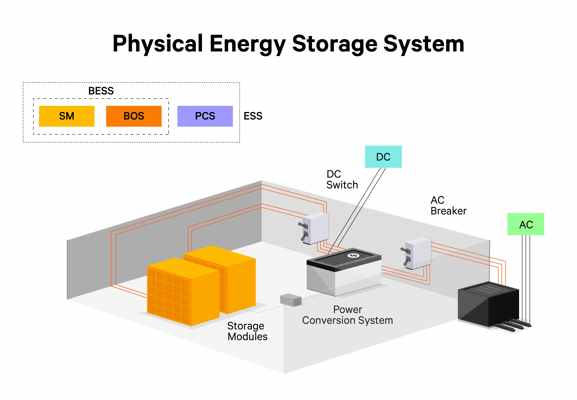
Tauchen tiefer: AC-gekoppelte vs. DC-gekoppelte Systeme
Hier ist ein kurzer Überblick über die beiden Hauptarchitekturen für Solarenergie + Lagerung:
- DC-gekoppelt: Die Sonnenkollektoren (die Gleichstrom erzeugen) und die Batterien (die Gleichstrom speichern) sind auf der gleichen Seite eines einzigen verbunden Hybrid-Wechselrichter. Dadurch kann der Gleichstrom von den Panels die Gleichstrombatterien direkt und sehr effizient laden. Dies ist oft die bevorzugte Methode für neue, Integrierte Installationen.
- AC-gekoppelt: Die Solarmodule verfügen über einen eigenen Solarwechselrichter, und das Batteriesystem verfügt über eine zweite, Trennende Batteriewechselrichter. Beide werden an die Klimaanlage des Hauses angeschlossen. Um die Batterie aus Solar aufzuladen, Der Wechselstrom vom Solarwechselrichter wird für die Batterie wieder in Gleichstrom umgewandelt. Diese Methode eignet sich hervorragend zum Nachrüsten einer Batterie in einem Haus, das bereits über eine Solaranlage verfügt.
GYCX Solar Story: „Wenn uns ein Kunde das fragt, Wir erklären, dass die beste Wahl von ihrer Situation abhängt. Für ein neues Grundstück in Singapur, bei dem Solar- und Speicherenergie zusammengeführt werden, Wir werden wahrscheinlich ein hocheffizientes DC-gekoppeltes System empfehlen. Für einen Kunden mit einer 5 Jahre alten Solaranlage, der nun ein Backup hinzufügen möchte, Ein AC-gekoppeltes BESS ist die perfekte Lösung."
Wie lange hält ein BESS??
Wir haben über die Lebensdauer der Batteriekomponente gesprochen, aber was ist mit der gesamten BESS-Einheit?? Wie lange können Sie mit der Lebensdauer des gesamten Systems rechnen??
Ein komplettes BESS ist auf eine lange Lebensdauer ausgelegt, Aber verschiedene Komponenten haben unterschiedliche Lebensdauern. Der Batteriemodule, wie wir festgestellt haben, normalerweise zuletzt 10 Zu 20 Jahre. Die andere wichtige elektronische Komponente, Die Wechselrichter (oder PCS), hat im Allgemeinen eine Lebenserwartung von 10 Zu 15 Jahre. daher, Sie können von Ihrer Anlage eine sehr lange Lebensdauer erwarten, mit der Möglichkeit eines geplanten Wechselrichterwechsels einmalig während der gesamten Batterielebensdauer.
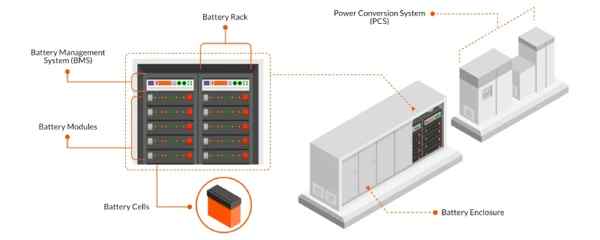
Tauchen tiefer: Lebensdauer der Systemkomponenten
Ein BESS ist eine Sammlung hochwertiger Komponenten, die aufeinander abgestimmt sind:
- Batteriemodule: Die LFP-Batterien sind der langlebigste Teil, Dank ihrer robusten Chemie, die für Tausende von Zyklen ausgelegt ist.
- Wandler (PCs): Dies ist das Arbeitstier des Systems. Als komplexes Teil der Leistungselektronik, das ständig hohe Leistungslasten bewältigt und mit Wärme zu kämpfen hat, seine Bestandteile (wie Kondensatoren und Lüfter) natürlich altern. EIN 10-15 Eine Lebensdauer von einem Jahr ist eine typische Erwartung für einen hochwertigen Hybrid-Wechselrichter einer renommierten Marke. Bei vielen gibt es passend zur Batterie eine 10-Jahres-Garantie.
- Andere Komponenten: Das Gehäuse, Verdrahtung, Sicherheitsschaltung, und andere Hardware (das „Gleichgewicht des Systems“) sind alle darauf ausgelegt, die gesamte Lebensdauer des Systems zu überdauern, sofern sie nicht beschädigt sind.
- Langfristige Planung: Das heißt, über einen Zeitraum von 20 Jahren, Sie sollten die Anfangsinvestition und einen möglichen Austausch des Wechselrichters einplanen 10-15 Jahresmarke. Dies ist ein normaler Teil des langfristigen Besitzes eines hochentwickelten Energiesystems.
Bei GYCX Solar, Wir bauen unsere Systeme ausschließlich aus hochwertigen Materialien BESS-Komponenten1 Von führenden Herstellern mit starken Garantien, und wir sind unseren Kunden gegenüber transparent über die erwartete Lebensdauer jedes Teils. Dies stellt sicher, dass Sie ein klares Verständnis davon haben langfristiger Wert2 und Wartungsplan für Ihre Investition.
EIN Bess-Batterien System ist ein intelligentes, integrierte Lösung, die für ein modernes Energiemanagement von entscheidender Bedeutung ist. Angetrieben durch sichere und langlebige LFP-Batterien, es ist langlebig, wartungsarme Anlage, die Energiesicherheit und finanzielle Einsparungen bietet. Indem man seine Komponenten und seine Funktionsweise versteht, Sie können eine selbstbewusste Investition in Ihre Energiezukunft tätigen.
Wenn Sie bereit sind, herauszufinden, wie ein BESS auf Ihr Zuhause oder Ihr Unternehmen in Singapur zugeschnitten werden kann, Unser Expertenteam bei GYCX Solar hilft hier, um zu helfen. Kontaktieren Sie uns noch heute für eine professionelle Beratung!
